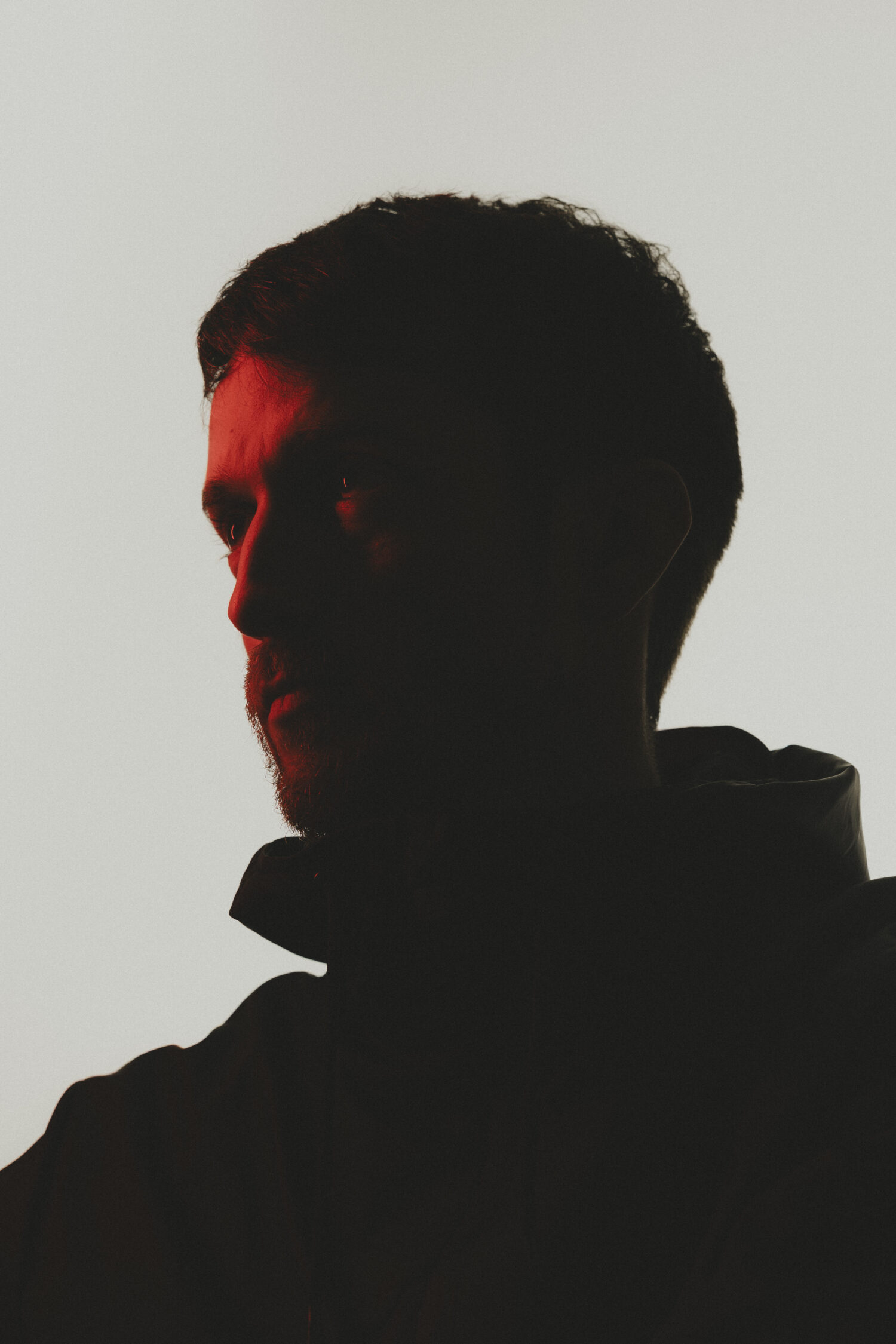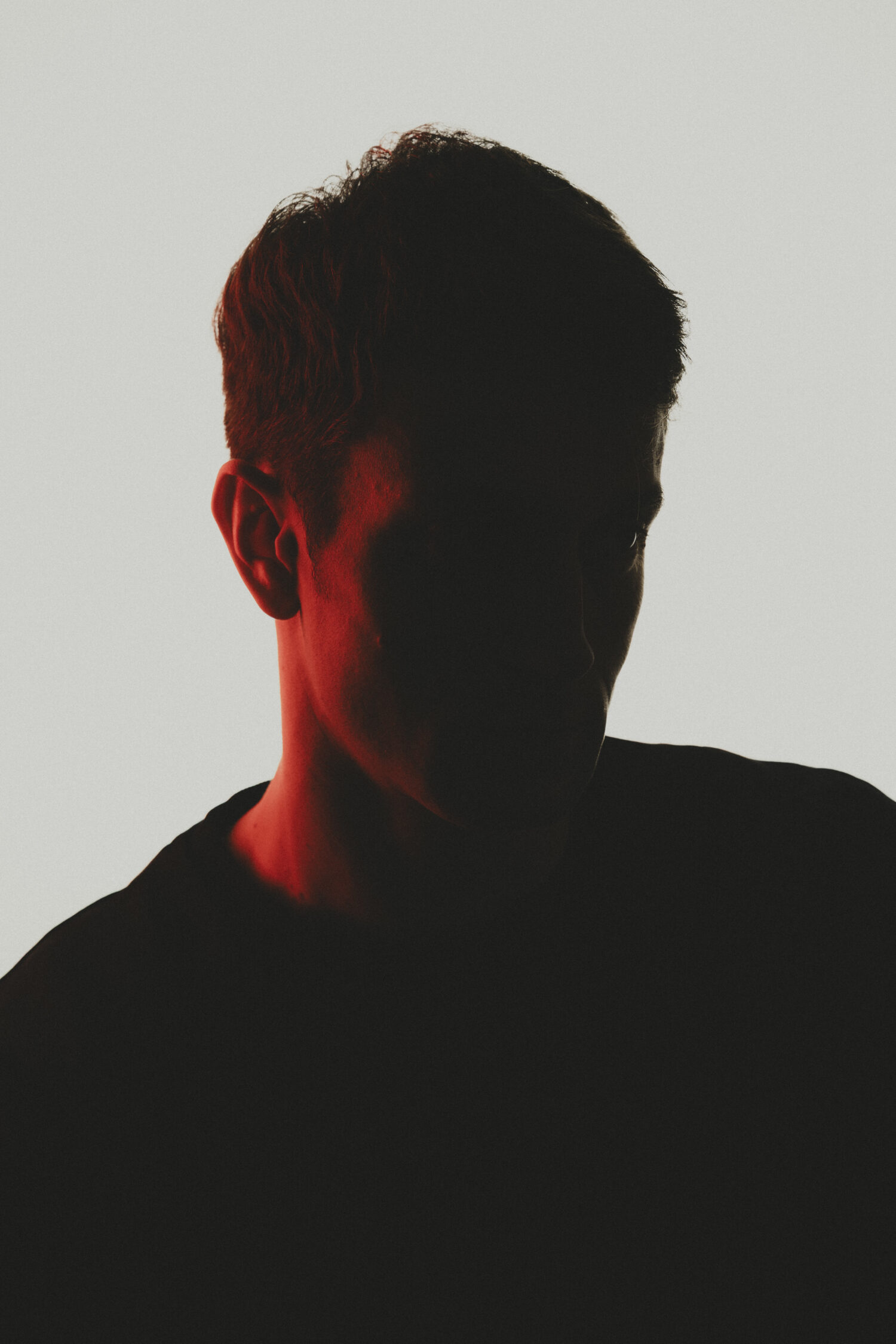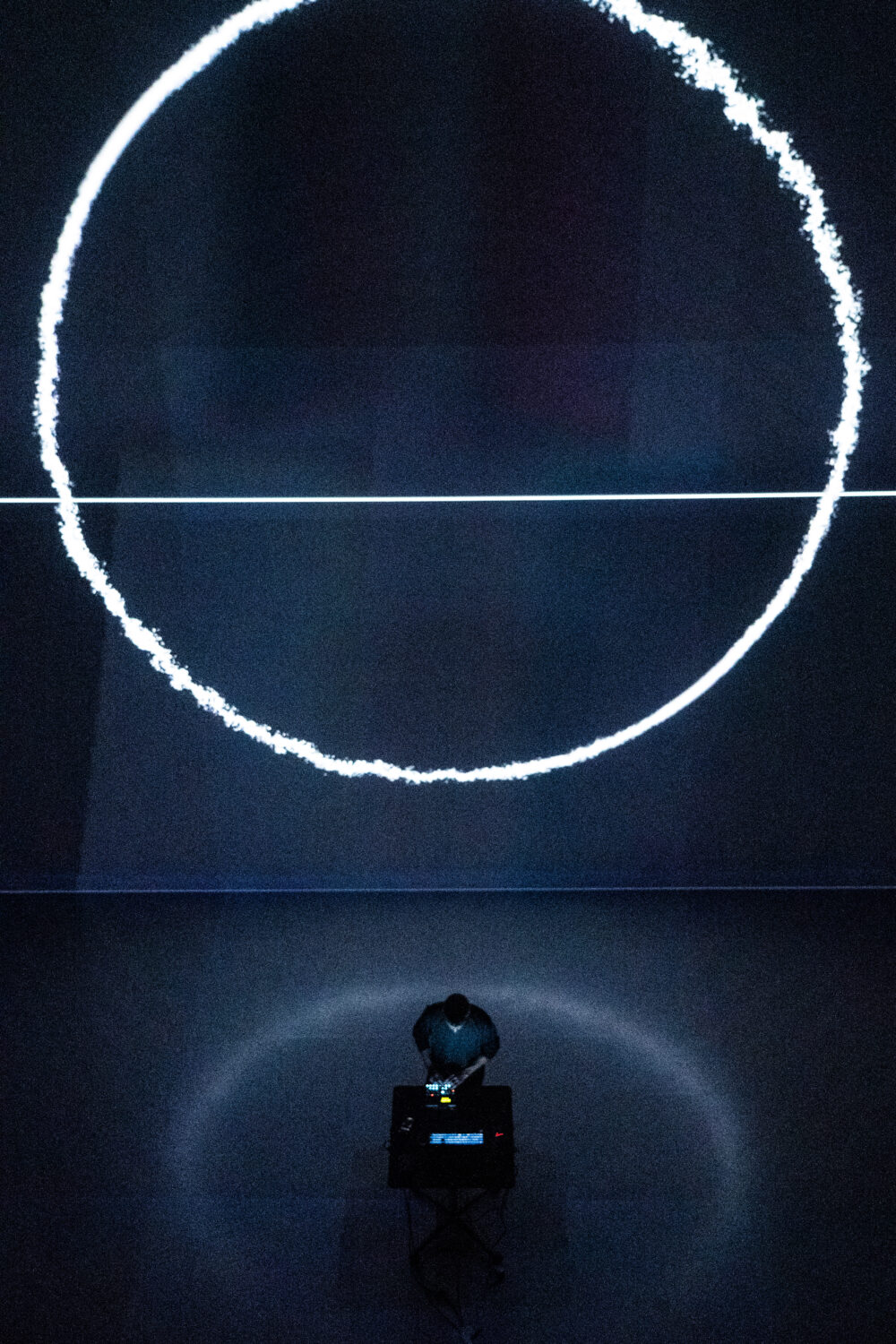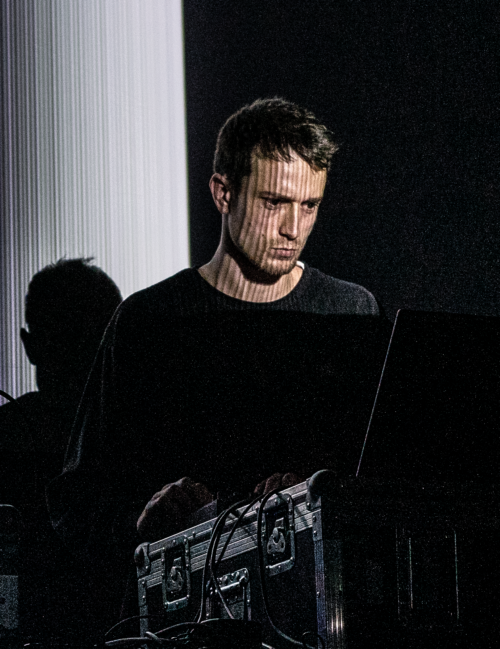“Autechre is still one of my favourites” – In conversation with Sturmherta

STURMHERTA and his influences on his upcoming RESi are products of tight, atomised scenes, united by a singular love of space, sound and sonic manipulation — as demonstrated by his year-and-a-half-long process of recording live performances, re-recorded through resonant physical bodies. These pieces feel sculpted to both stimulate the mind and the body.
As such, RESi betrays a rhizomatic approach to sound synthesis and musical composition. Post-post-club: 1’s and 0’s stretch their fingers from creative coding environments like Max/MSP into the real-world, technology informing art informing life informing art.
This creates an aural tightrope act between predictability and unpredictability. Every time a colossal distorted bassline cuts out, microphone-feedback builds in place of expected silence, and as it just starts to pierce the ears, a reprieve — a deep swell of bass surfaces and swallows the electronic plasma whole. Meanwhile, an undercurrent of sensitivity hovers behind slits of static, tinting industrial sounds with an emotional weight, colour and humanity.
When STURMHERTA distils the act of creating electronic music into its fundamental sonic parts, the creative process begins to look a lot like sound art. And rightly so. In a global shift in mass media and communications, one where algorithms reign supreme and music is increasingly packaged as background products thanks to the industriousness of platforms like Spotify, the field begs for the strange, abstract and undefinable.
Almost in spite of monolithic digital streaming companies, and the glut of increasingly accessible music production software (now including generative AI models to create facsimiles of sounds), artists like STURMHERTA are experimenting by stretching their electronic sounds into meatspace to enrich and forward the art and science of electronic music.
It’s no surprise then, that phonon~, a Czech-based non-profit association dedicated to contemporary marginal music and sound art is releasing RESi. phonon~ (established by Polina Khatsenka (mʊdʌki), Jan Krombholz, and Petr Hanžl) explores the outer edges of sonic experience through experimental events, media art, and deep listening.
In 2017, the first phonon~ “sleepovers” emerged—immersive, quadraphonic listening nights that planted the seed for a much broader vision. Since then, the collective has initiated and co-produced a wide array of projects: from conferences on sonic ecology and spatial audio residencies, to bass-heavy sound system parties and ritual-like gatherings such as the tribal tearoom.
In parallel with live programming, phonon~ runs a label and audio archive — available in both digital and physical formats via phononlabel.bandcamp.com — documenting the voices of underground sound cultures. The collective also curates a long-running radio show, hosted by Punctum Radio and helmed by Khatsenka, which serves as a platform for experimental agents from Eastern Europe and beyond to transmit sonic dispatches from their ecosystems.
At its core, phonon~ is fueled by mutual support, curiosity, and a relentless search for emergent practices in sound synthesis and media art. Attending a phonon~ event means stepping into a carefully crafted world of cutting-edge sound—rich, resonant, and radically open.
We spoke with STURMHERTA and Polina Khatsenka (mʊdʌki) about RESi.

“I’m following curiosity. That’s the main thing.”
Tell us about your musical journey up until this point.
It’s been a long journey. I started playing in metal bands, you know, playing guitar and drums in different bands. It was not really meant for live gigs. It started just as a fun thing in the bedroom — producing sounds with a guitar and drums.
After that, I somehow got into electronic music. I had enough of death metal. In the beginning, my main direction was more influenced by IDM stuff — you know, Warp Records, Aphex Twin, Autechre, and Venetian Snares, this weird breakcore stuff. That’s what I was into at the beginning and still am. Autechre is still one of my favourites.
I tried to recreate these sounds at first on a laptop with Ableton. Then I started getting into modular, looking for ways to make weird, complex sounds and rhythms. From there, it always transforms. I think every live set sounds different because my interests shift a little bit—and so does my sound. It changes.
For this release and live set, I think it’s really different from my previous stuff. It was heavily influenced by bands like Emptyset. I was really interested in their approach—producing something very minimalistic in rhythm and timbre, then sending it to devices that expand the characteristics of the sound. In the end, you get something very complex, chaotic, and super interesting.
I also discovered an Austrian duo who have a similar approach but work with guitar and bass—really electroacoustic instruments. They play something very simple and put it through lots of effects. I started my own approach based on that idea.
The standard story of discovering musical possibility generally goes from classic instruments, like guitar; to discovering pedals, then DAWs, digital effects, synthesizers, etcetera. I’m curious about how you made the step forwards and backwards — sending digital sounds into physical space and back again?
I was doing an experiment for an installation: I wanted to make sound waves visible on a polished metal plate to have it vibrate. I think this was the point where I started thinking more along the lines of, maybe I can use this technique for my live sets, with different objects.
I had drum parts lying around from years before, and now I’m using them as resonant bodies— putting transducers on them, making them shake, sending sound into them, recording with a microphone, and adding it back into the sound. It adds texture to the whole thing.
Throughout this process, a lot of accidents happen. For example, I use a microphone to capture the sound from a snare drum, and in a live situation, when I overamplify it, I get feedback. That feedback has now become part of the album’s sound. I also discovered that when I play bass, the feedback disappears, and when I stop, it’s returning. Now I’m creating rhythm by pushing away the feedback with the bass and playing with it.
For my next show, I’m experimenting with four microphones instead of two. I’m placing some in different positions — even in the room, not just on the instrument — to pick up different frequencies. Maybe in the future, I’ll do something only with this technique — I don’t know where it leads, but I’m following curiosity. That’s the main thing.

“It sounds sculpted, like someone is working with matter, with their hands.” (mʊdʌki)
What was the process behind creating this album? How do you turn digital sounds into resonance and glue them together into a singular work?
I use a digital synthesizer called Elektron Digitone. The signal flows from the synthesizer to the Octatrack, which acts as a sampler, mixer, and effects unit. I collect all the sounds there, and it functions as my main mixer. There’s a headphone out on the Octatrack that I don’t use for headphones—I use it to send audio to effects. It goes to an amplifier, then to a transducer that sticks to the snare drum and cymbal. I use two different microphones on the cymbal—a contact microphone—and for the snare drum, just a cheap mic to pick up the sound. From there, it goes back to a mixer, where I control the amplification, then back into the Octatrack. Everything is processed together with a master compressor to unify the sound. I don’t always send everything to the resonant bodies—sometimes it’s just the bassline, sometimes kick drums that amplify the impact, or hi-hat sounds. Most of the time, it’s the bassline.
Polina — As a fellow experimental sound artist, I can see what drew you to STURMHERTA’s sound. But why this album in particular? Is it more about how Daniel thinks about sound, or is it more about the actual quality of the result—or both?
Polina (mʊdʌki): I think, in the case of this release, it’s a combination. It’s obvious from his inspirations how he arrived at this aesthetic, but it’s also something we resonate with at Phonon. Many of us love hard, heavy, dark sounds—there’s a connection to metal and breakcore. Venetian Snares is a great example. Jungle and other dance music genres deal with complicated polyrhythms and broken rhythms, combined with this heavy, almost guitar-like aesthetic.
For the past two years, my own live set has also carried this bass-heavy, dark sound. When listening to Daniel’s release, I immediately recognized that it wasn’t just digital—it felt physical, haptic. You can hear the material, the way the feedback shifts and interacts. It sounds sculpted, like someone is working with matter, with their hands.
This haptic approach to sound is something I really enjoy. That’s also why at Phonon, we got into spatial audio — not just for the surround effect, but because sound has this power to express intangible phenomena while behaving like a tangible entity. When sound moves air particles in a certain way, it feels like a living creature.
What sort of context do you feel RESi should be experienced in, and does it matter?
The music is meant to be experienced as a live set on a powerful sound system—you have to “feel” the sound. It’s about energy and experience. Of course, you can listen at home, but the main focus is live.
Polina (mʊdʌki): That was one of my motivations — I heard Daniel’s sound and thought, “Fuck, I need to hear this on a big PA.” It was a defining factor when choosing venues for the release. There are great listening spaces, but the music needs a good subwoofer and volume to be fully experienced. Listening on near-field monitors at home doesn’t do it justice.
Would you ever go back to your early days of just purely DAW-based music? It feels like you’re at a point where you’ve broadened out. You know, first effects, then real-world stuff, then feedback from sound systems and acoustics, and it’s getting bigger and bigger. Do you ever see yourself going back to something that’s just purely digital?
STURMHERTA: I mean purely digital, definitely. I’m also working with Max MSP, where you can really go into software, like you develop your own instruments. I also do that. But I recently thought that it might be interesting to return to composing a piece within a timeline. To jump from physical gear style things to purely laptop-focused digital performances is definitely possible. I’m currently doing it.

Are you working on anything in parallel?
Yeah, always. I’m not able to work on one thing for a really long time. So I always start new things. And there is also the thing of, f.ex. deadlines for funding. So I have to start a project somehow, at least think about it. And if you get funding, you have to finish within one year…
So yeah, f.ex. I’m working on an installation that consists only of strobes. So imagine 20 stroboscopes in a room and doing a composition with them, with each stroboscope also creating a sound, like a full sound. And that’s a minimalistic approach to making a composition.
And yeah, I’m trying to develop instruments, software instruments, as I said in Max, Max MSP. So that’s something I’m constantly working on.
I’m excited. I’m looking forward to seeing RESi live.
Yeah, definitely come along for the tour. It’ll be fun.

STURMHERTA – RESi Tour Dates
30/04 | House of Arts, Ústí nad Labem, CZ
02/05 | Salo, Prague, CZ
03/05 | Fraktal, Brno, CZ
08/05 | rhiz, Vienna, AT
09/05 | Nospace, Budapest, HU
10/05 | [Secret Location], Linz, DE

Sturmherta

This article is brought to you by Struma+Iodine as part of the EM GUIDE project – an initiative dedicated to empowering independent music magazines and strengthen the underground music scene in Europe. Read more about the project at emgui.de
Funded by the European Union. Views and opinions expressed are however those of the author(s) only and do not necessarily reflect those of the European Union or the European Education and Culture Executive Agency (EACEA). Neither the European Union nor EACEA can be held responsible for them.